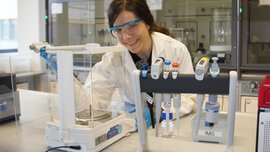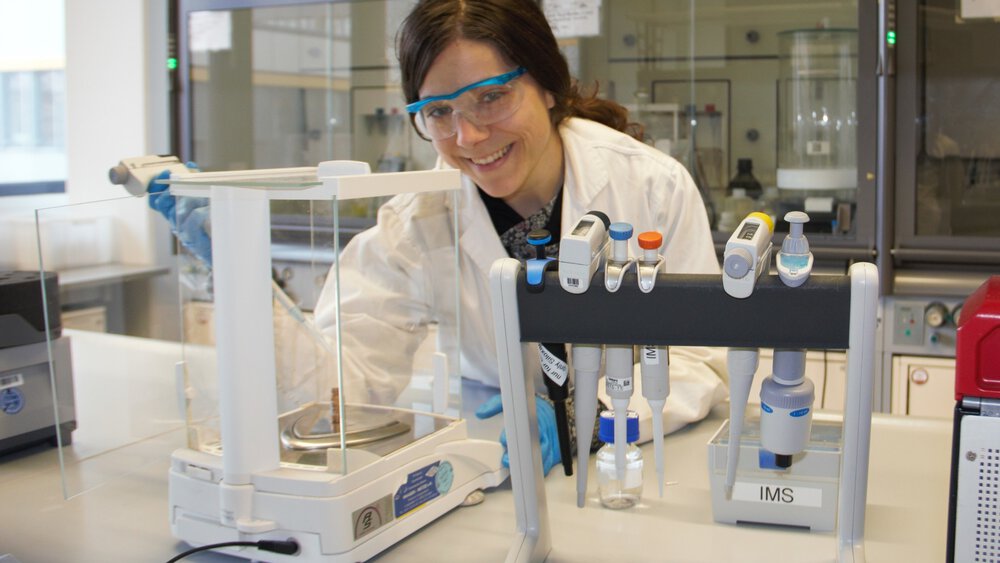Simple errors cause major lab risks
May 13, 2019
Neglecting the most basic procedures can derail experiments and present a risk to health and safety, warns an Applied Analytical Chemistry expert set to deliver training at analytica Lab Africa in Johannesburg from 9-11 July
Neglecting basic protocols are among the most common mistakes made in laboratories around the world, presenting significant risk to health and safety. This is according to Lidia Montero, Ph.D. of the Applied Analytical Chemistry department of the Faculty of Chemistry at the University of Duisburg-Essen in Germany, who will participate in analytica Lab Africa in July to present a practice-orientated seminar for laboratory users. The workshop will give an overview of basic but very important procedures for working in a lab.
“One of the most dangerous mistakes to make in a lab is to incorrectly store hazardous materials. Every chemical requires specific storage conditions in terms of temperature, light and ventilation, and overlooking correct storage of these materials can cause a dangerous accident,” she says. “People working in chemistry labs are in continuous contact with hazardous substances that could produce physical risks like explosions, health risks like toxicity, and environmental risks. It is very important to know the hazards associated with these substances and how to handle them properly.”
In addition, simple mistakes such as incorrect labelling of aliquots or samples can create confusion and cause accidents, she says.
Montero notes that in addition to increasing risk, simple mistakes could derail extensive work. “Important mistakes that can occur are related to the organisation of the lab. For example, the availability of the materials (chemicals, glass material, pipets and tips) and their order in the lab is crucial to optimise working time. The best solution for the optimal availability is to organise the material by a logical distribution or classification, depending on the drawers and cabinets and the needs of the lab. Using signs or labels to identify the material that is inside of the cabinet or the drawers is very useful, to indicate if the contained material should be specifically used for certain experiments.”
Montero says that in the case of new experiments, it is important to approach the whole task with caution, first researching published articles and scientific data, reviewing the potential risks of chemicals to be used and ensuring a clear understanding of any instruments that have not been used before.
Other common lab errors include not knowing rules specific to the lab one is working in, not having an adequate lab notebook to note every step carried out in an experiment or workflow; or neglecting proper maintenance of large instruments and calibration of measurement instruments such as pipets, balances and pH-meters.
“People who work daily in the lab should know the rules and procedures, but knowing the rules does not mean they always remember to put them into practice,” she says. “It is very common to neglect proper procedures amid the routine of the experiments, and the stress and hurry to obtain results.”
Montero will hold a practice-orientated seminar for laboratory users at analytica Lab Africa, the trade fair for laboratory technology, analysis, biotechnology and diagnostics, to be presented by Messe Muenchen at the Gallagher Convention Centre from July 9 – 11, 2019.
Ongoing refresher courses on how to work in a lab are important, to share advice on how to properly work in the lab, focusing in particular on the routine but important tasks that all of us do daily, like the adequate use of gloves, pipetting, balances, foam hoods or personal care, with the main objective of maintaining the best lab environment, she notes.
“Following this practical advice, some errors will be avoided, and besides these practices can contribute to the achievement of better results in terms of quality and reproducibility.”
“Sometimes, we think that safety only affects ourselves, but we also have to consider the health and safety of everyone else working in the lab, and the results of our work.” In her session, Montero will present both the theory and practical demonstrations of the basic lab techniques and procedures. The session is designed to be informative for everyone from students through to experts.
analytica Lab Africa will present expert insights, over 120 leading international and local exhibitors as well as over 130 additionally represented companies. It will be staged alongside food & drink technology Africa (fdt Africa) and IFAT Africa – the premier environmental technology trade fair for water, sewage, refuse and recycling. With solutions for a range of sectors, from pharmaceuticals and cosmetics through to chemicals, analytica Lab Africa will present the latest laboratory technology and analysis equipment. analytica Lab Africa will also feature a German Pavilion, Spanish Pavilion, Chinese Pavilion and – for the first time in South Africa – an International Pavilion with companies from the U.S., UK, France, Italy, Switzerland, Japan, Malaysia, Russia and Turkey, looking to branch out into Africa.
Up to 6,000 visitors are expected to attend the co-located events.
Downloads
490907
Belonging images


